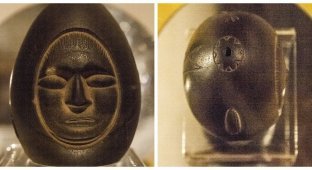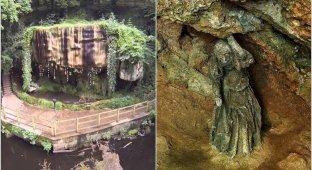Singapore stone (6 photos)
At the mouth of the Singapore River, on a hill known as Rocky Point, there once stood a huge boulder 3 by 3 meters wide. It was first discovered in 1819 by workers clearing the forest on the orders of Sir Stamford Raffles, the British officer who gained control of Singapore Island to establish a British presence in the region. 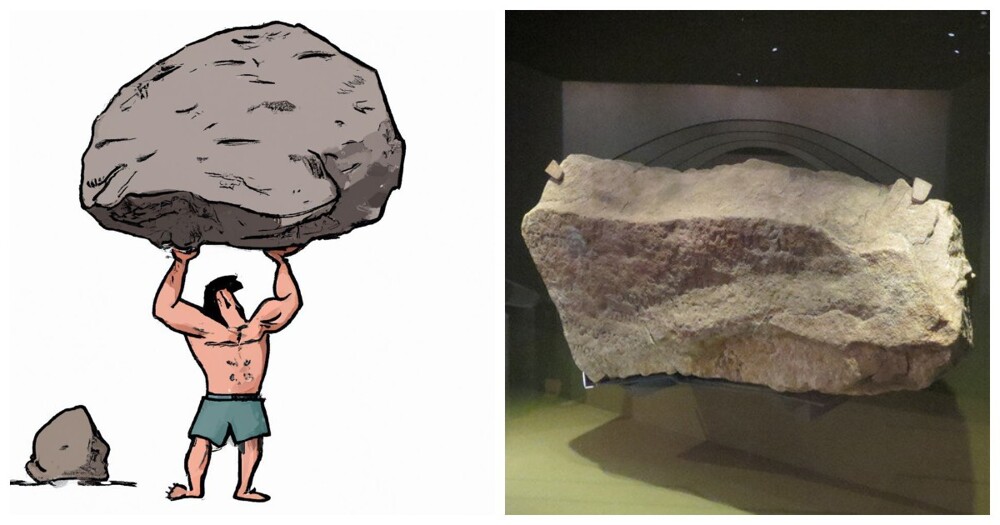
On one of the faces of the rock, several lines were inscribed in a mysterious font that neither local residents nor foreign archaeologists and other enthusiasts could understand. This caused close attention to the stone and the mysterious inscription on it. Unfortunately, in 1848, this stone was destroyed by engineers of the East India Company during work to widen the mouth of the river. Only a few fragments of it have survived.
Legend 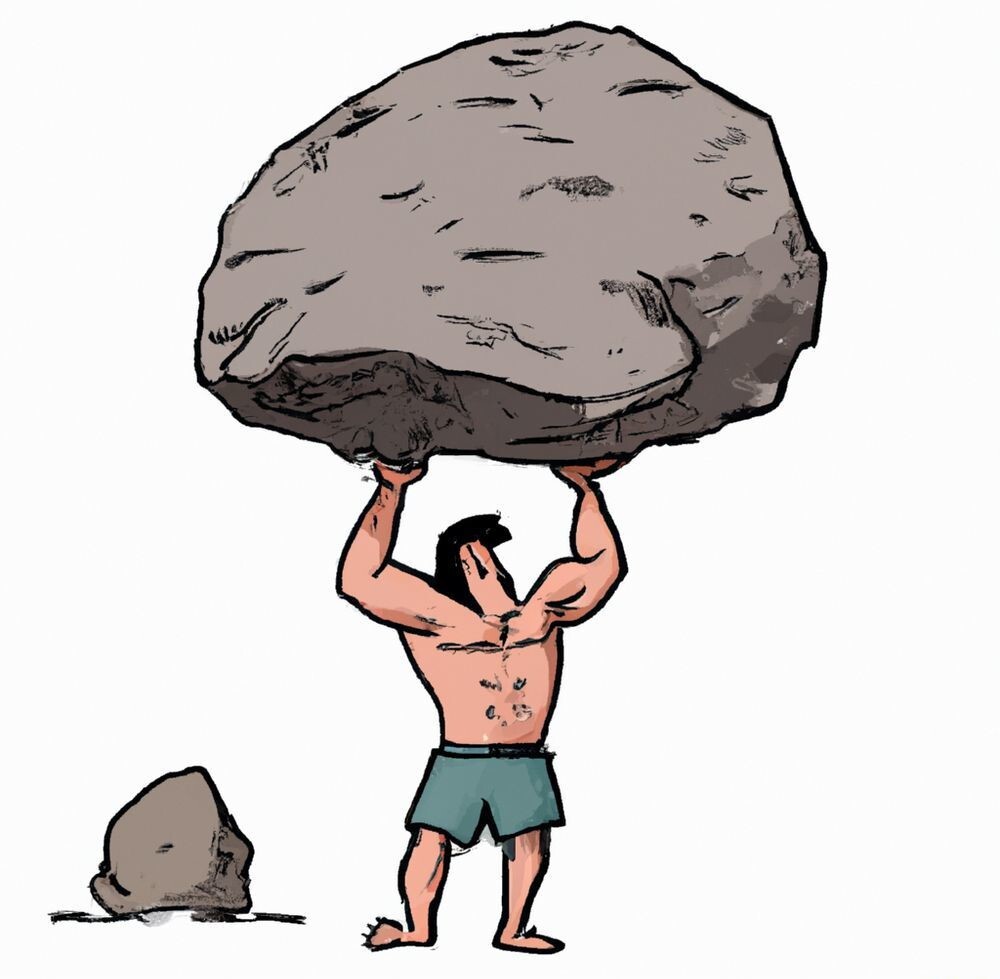
Badang
According to local folklore, this huge stone was thrown into the mouth of the Singapore River by the great mighty Badang, who lived during the reign of King Sri Rana Vikram of the Singapore Empire in the 14th century. Badang was a simple boy. In his youth he worked for a wealthy farmer, working in the fields and clearing forests. At night I fished, setting a net in a small stream.
One night, while going for fish, he saw a demon snatching the catch from the net. Badang became so angry that he caught the demon and tied him to a rock by his hair. The demon begged for mercy and promised to fulfill any of his wishes if Badang spared his life. Badang wished for strength so as not to get tired while working. The demon agreed.
Returning to the farm, Badang eagerly used his new power and cleared an area in the forest in a short time. The rest of the workers and their owner were amazed. Soon news of his power spread throughout the kingdom and neighboring countries. The King of Singapore invited him to court.
The strong man competed with many others, but the result was always a draw. Finally, it was decided that the one who could lift the largest stone in front of the palace would be declared the strongest. Badang not only lifted the stone above his head, but also threw it, and it fell into the mouth of the Singapore River.
Breaking boulders 
An 1825 map of Singapore shows the location of Rocky Point at the mouth of the Singapore River, where sandstone boulders stood
In 1843, the boulders were blasted to widen the dam at the mouth of the Singapore River and free up the area for the construction of Fort Fullerton. Lieutenant Colonel James Lowe, an officer of the East India Company, tried to save the stone from destruction, but his pleas were ignored. After the stone was broken, he collected several fragments containing the most legible parts of the inscription and sent them to the museum in Calcutta for safekeeping.
Mysterious inscription 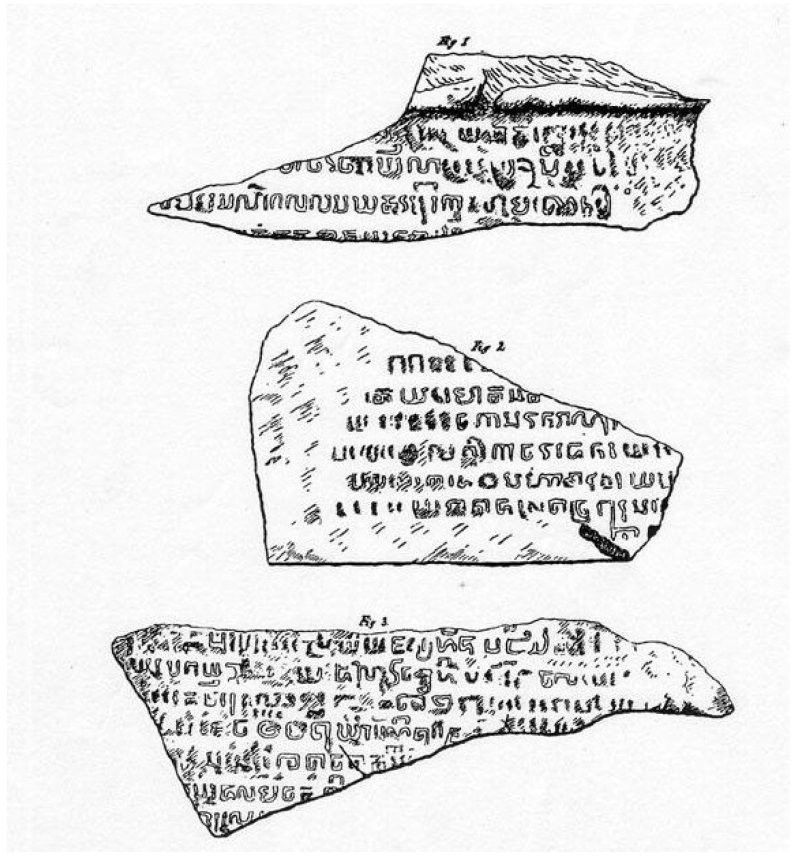
Copied fragments
Over the past century and a half, the fate of the missing fragments and the mysterious inscription contained on them have aroused the keen interest of researchers. Many attempts have been made to decipher the inscription on the stone, resulting in a range of interpretations and languages being proposed.
Sir Stamford Raffles was one of the first to try to decipher the inscriptions on the original sandstone slabs before they were destroyed. He believed that the inscriptions were "Hindu".
A certain Dr. William Bland also became interested in the stone tablet. Using flour, he made casts of the carved inscription and, with the help of a local scribe, came to the conclusion that it was an ancient Ceylonese or Pali language. 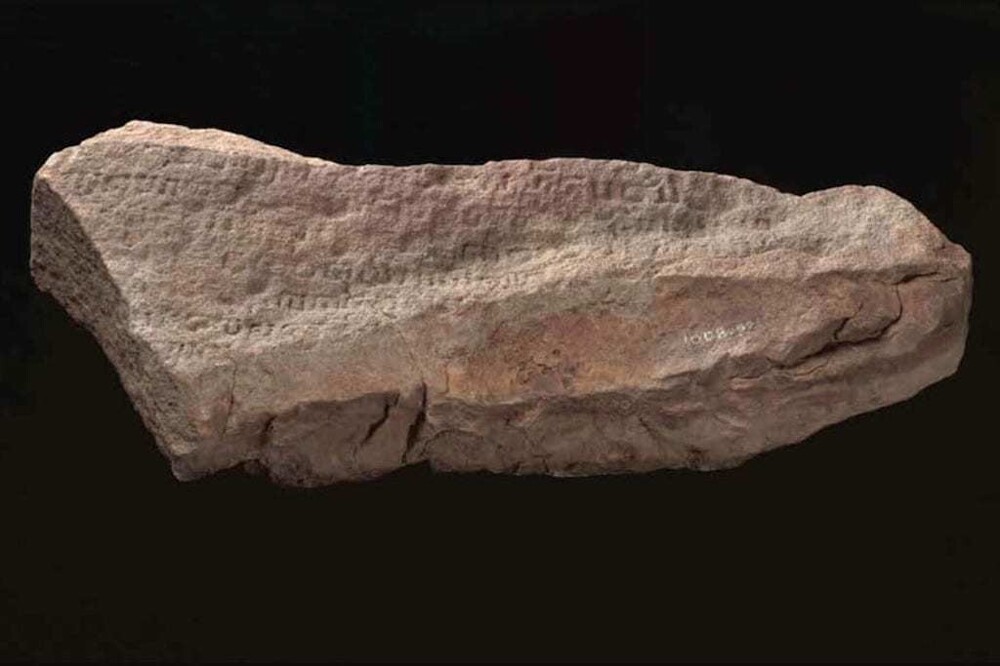
Surviving piece
According to East India Company Madras Artillery Captain Peter James Begbie, the inscription was written in an obsolete dialect of Tamil and described the exploits of Badang and the history of the stone.
Another explanation is that the inscription on the stone is Kawi, an ancient language of the islands of Java, Bali and Lombok, based on the Old Javanese language. Modern researchers agree that it is most likely Kawi, although the inscription is impossible to decipher.
Recently, in December 2019, Dr. Ian Sinclair, an Australian researcher, wrote in his paper that he was able to decipher part of the word “Parakesarivarman”, which was used by several kings of the Tamil Chola dynasty in India. This is a title. The find demonstrates a thousand-year-old connection between the Tamils and the Singapore Strait, which could change the historical chronology of the island. Sinclair suggests that the stone may have been found as early as the 11th century, placing Singapore more than 300 years earlier than the generally accepted founding date of 1299.
Singapore stone today 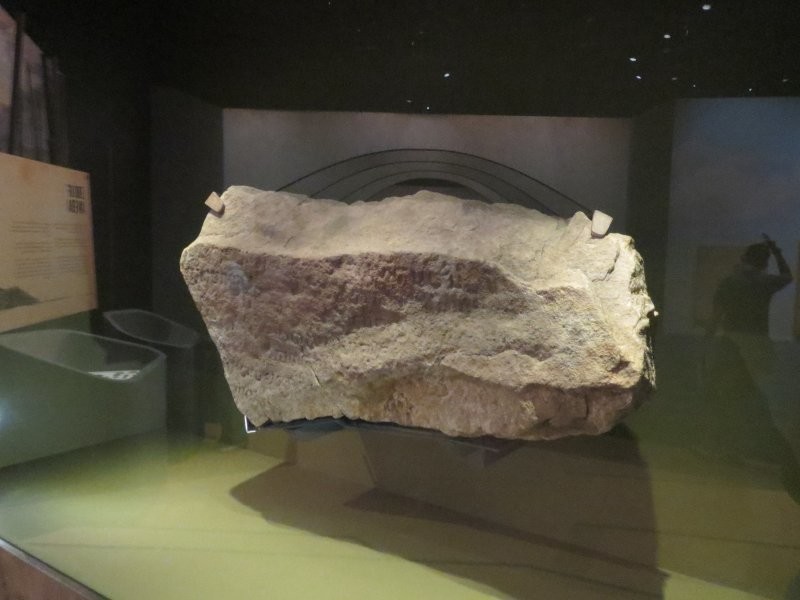
Singapore stone in the museum
One of the fragments of the original sandstone slab, rescued by Lieutenant Colonel Low, is now known as the Singapore Stone. It is currently on display in the History Gallery of the National Museum of Singapore.













